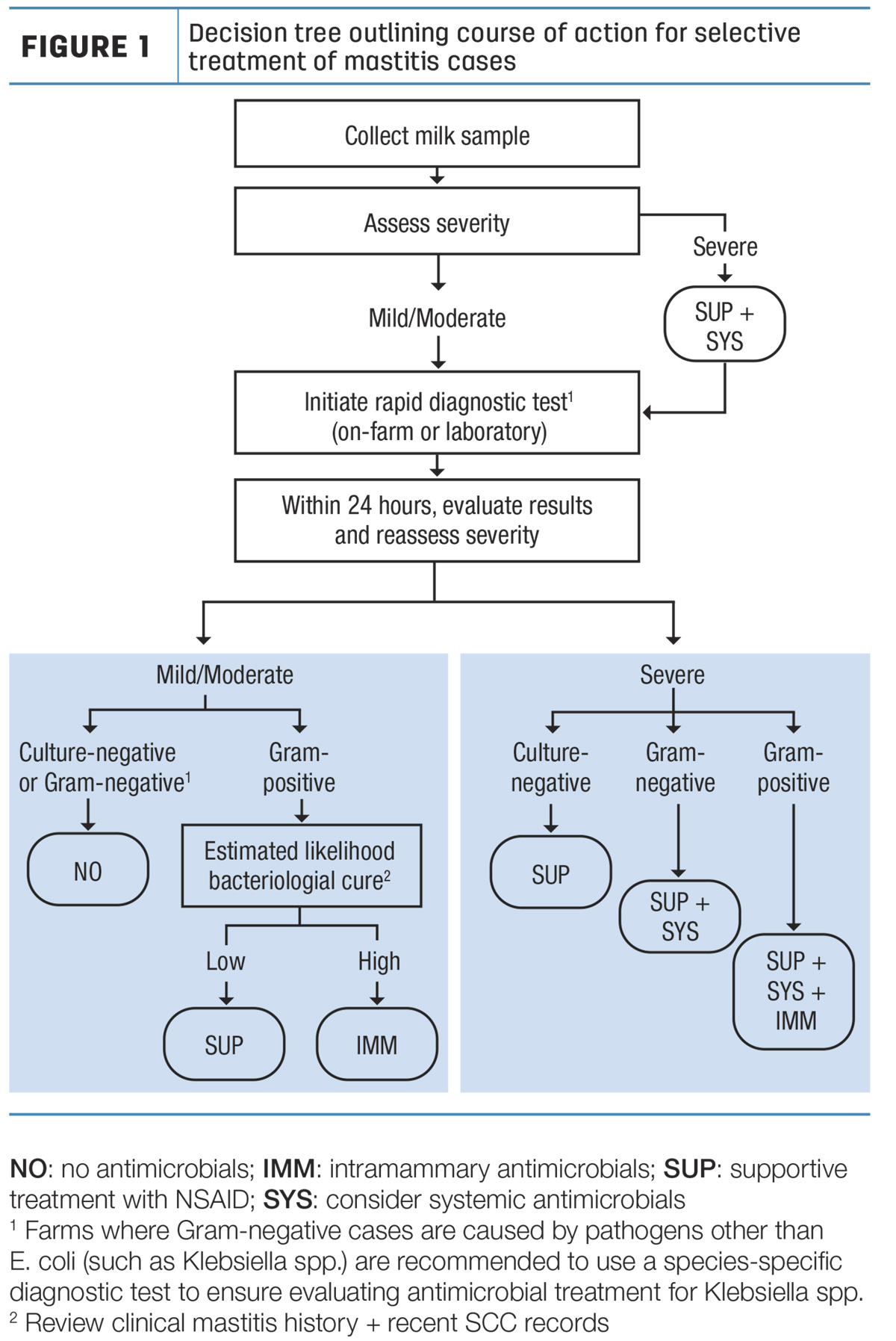To read this article in French, click here.
Treatment of clinical mastitis represents one of the most common reasons for antimicrobial use on dairy farms around the world. A recent study conducted on 101 Quebec dairy farms highlighted this, where intramammary use of antimicrobials represented the highest amount of antimicrobial usage during lactation. Antimicrobials considered “highly important” (Class II) or “critically important” (Class I) for human health were often used to treat cases of clinical mastitis, as they make up most of the commercially available intramammary products.
Due to the importance of reducing antimicrobial resistance, action needs to be taken to curb antimicrobial use on dairy farms – but this must be done without compromising dairy cattle health or welfare. A promising method to accomplish a reduction in antimicrobial use is selective treatment of cases of mastitis, where only some cases of mastitis are treated with antimicrobials. The selective method uses on-farm or in-clinic milk cultures to identify if bacteria are present in milk samples from cows with mastitis. Only those cases with bacteria present are recommended for antimicrobial treatment.
Dr. Herman Barkema’s research group at the University of Calgary has been working to provide further evidence of the utility of selective clinical mastitis treatment. A project, led by Ph.D. candidate Ellen de Jong, investigated whether there are negative consequences to a selective treatment process based on on-farm cultures. Using a rigid and proven method to meticulously review existing research, they evaluated 13 studies that compared the treatment of all cases of clinical mastitis with antimicrobials (i.e., blanket treatment) to selective treatment of clinical mastitis cases with antimicrobials. A number of health-related and bacteriological outcomes were evaluated. Overall, they found that there was no difference in the proportion of cases that cleared the pathogen after 21 days, although it took longer (about half a day) for clinical signs of mastitis to go away in the selectively treated herds. It also took longer for mastitis-causing pathogens to become absent on bacterial culture. However, it is important to note that no differences were found with respect to risk of new infections, somatic cell count (SCC), milk yield, recurrence of clinical mastitis or culling between those treated selectively versus all cases treated with antimicrobials.
What does this mean?
Using all available scientific evidence, it is clear that a selective treatment approach to treating clinical mastitis can be adopted with minimal negative consequences. In fact, setting up a method to culture cases of clinical mastitis could be extremely helpful to guide treatment and decision-making.

Start by taking a sample of milk from the affected quarter and culturing the sample with the goal to have results back within 24 hours. If the culture comes back showing no bacterial growth, or if gram-negative bacteria are cultured, no antimicrobial therapy is needed and the milk can simply be discarded until it returns to normal. If gram-positive bacteria are found, an antimicrobial may be administered.
Overall, it is estimated that only one-third of cases of non-severe clinical mastitis will benefit from antimicrobials. So the opportunity is there for dairy producers to lower costs of treatment, and use of antimicrobials, without compromising health and welfare. Consider working with your herd veterinarian to create a protocol that works for you and your farm.
This article is provided by the team at ACER Consulting; Ellen de Jong and Herman Barkema with the University of Calgary Faculty of Veterinary Medicine.








